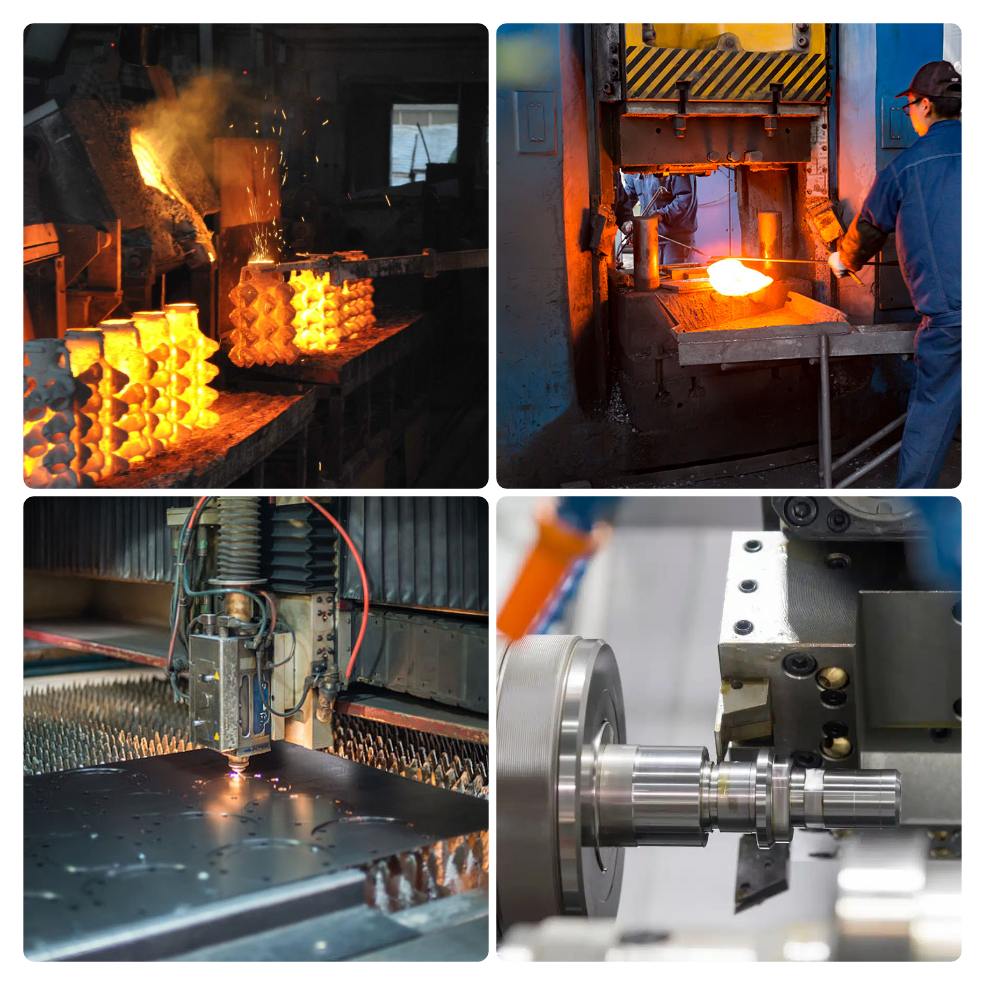What is the difference between forging, stamping and casting?
Conceptual differences
1) Casting: is the shapeless metal liquid into a solid shape, is the process of casting molten metal into the model to obtain castings. The casting major focuses on the metal melting process, as well as the process control during the casting process.
2) Forging: It is a solid that turns a shape solid into another shape solid, is a plastic forming under the solid state, there are hot processing, cold processing points, such as extrusion, drawing, block rough, punching, etc., all belong to forging.
Forging: It is mainly formed by extrusion at high temperature. It can refine the grains in the parts.
3) Stamping is the stamping of raw materials with a suitable stamping die.

Advantages
Forging advantages: The mechanical properties of forgings are generally better than castings of the same material. Important parts with high load and severe working conditions in related machinery are mostly forgings.
Casting advantages: It can produce parts with complex shapes, especially blanks with complex inner cavities; Wide adaptability; Wide source of raw materials, low price, such as scrap steel, scrap parts, chips, etc. Widely used, 40% to 70% of agricultural machinery, 70% to 80% of the weight of machine tools are castings.

